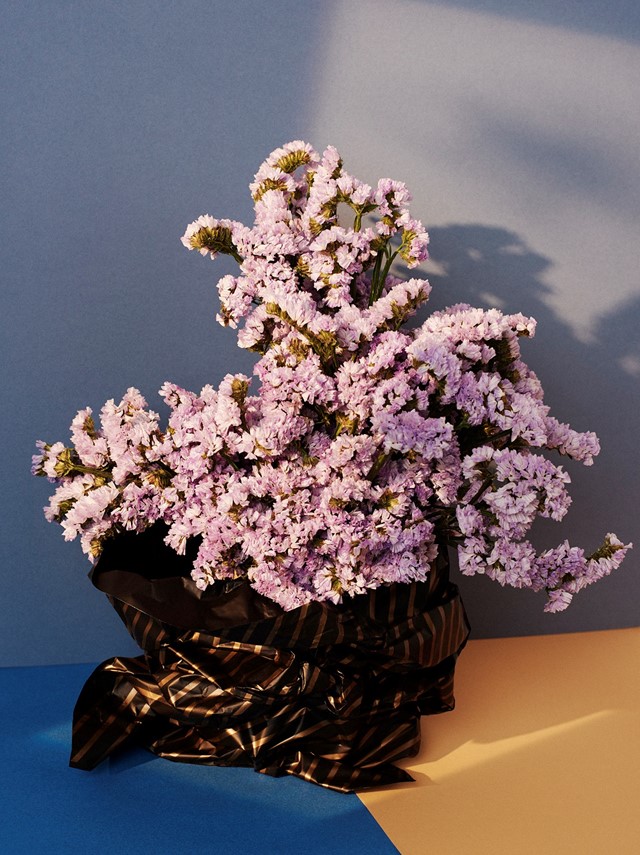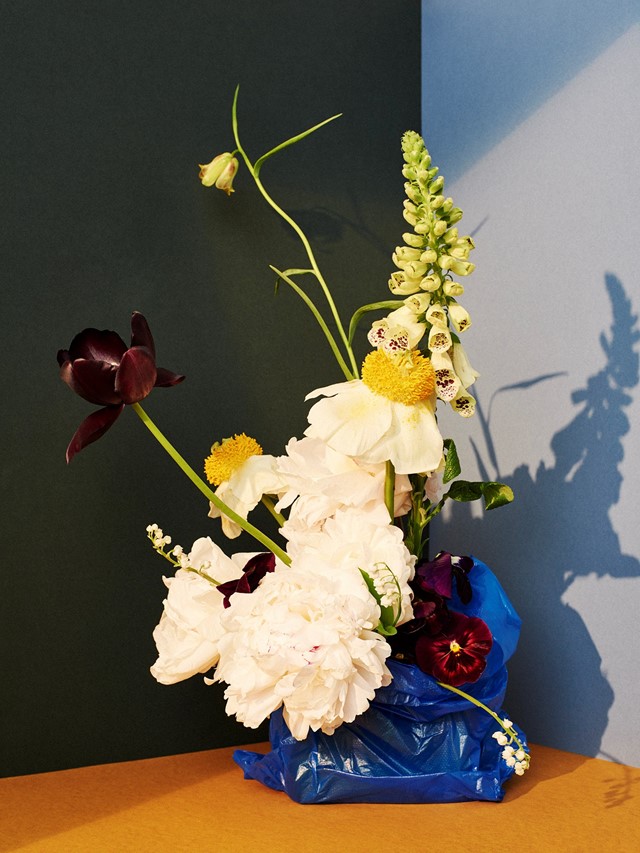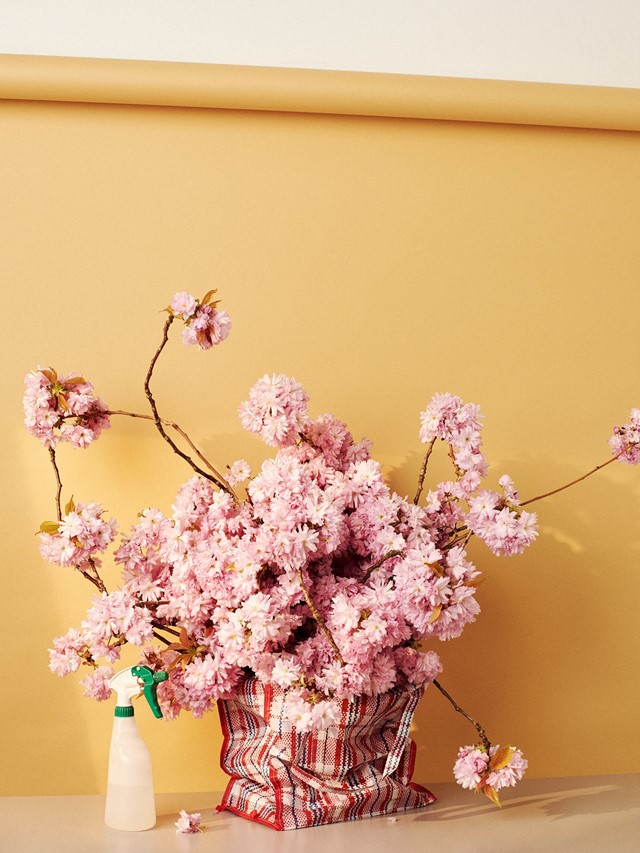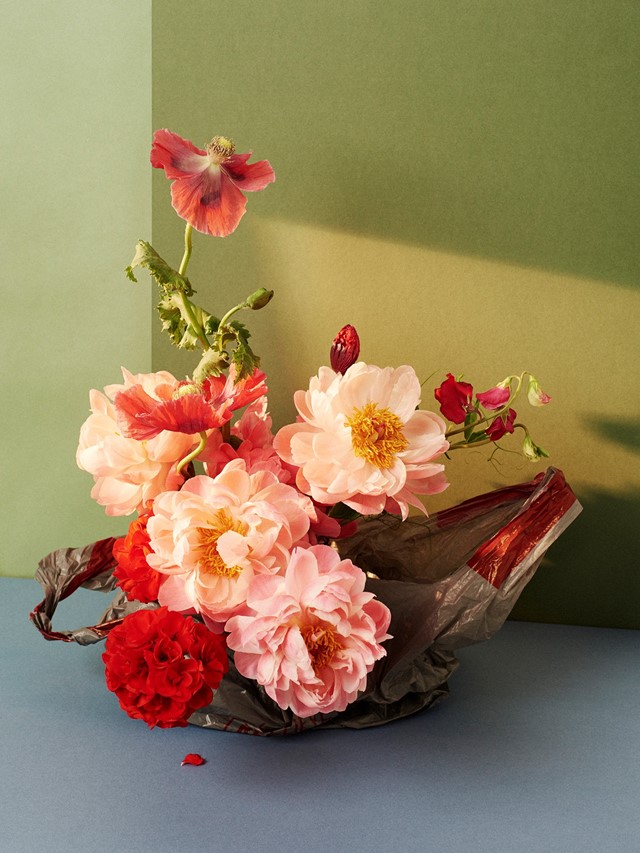Victoria Zschommler’s floral still lifes reference the Japanese art of Ikebana
The beauty of freshly cut flowers is bound in melancholia; that they only last for a short time seems to emphasise their loveliness. Victoria Zschommler’s photographs of ephemeral floral arrangements, framed in the folds of substantially more permanent plastic bags, make for an intriguing juxtaposition. They’re strange and gorgeous in equal measure.
Her At Bloom series directly references Ikebana, the Japanese art of “giving life” to flowers. This ancient form aims to unite nature and humanity, and Zschommler’s unique play on this concept highlights the similarities, rather than the disparities, between petals and plastic. Within Ikebana, blooms are often arranged in a scalene triangle, where the various points represent heaven, earth and man. Zschommler compares this notion to the photographic rule of thirds. “In this way, I probably approach the composition of my images similarly to the scalene triangle in Ikebana,” she says. “The balance of light, composition and mood all play into this.”

There is something both satisfying and jarring about the sight of poppies and peonies protruding from plastic bags. Zschommler says that she chose to use carrier bags “for their fine and delicate texture, resembling the scrunched up quality of a petal”. She enjoys “shooting something so naturally beautiful with something not so beautiful”. “I think the comparison between the man-made objects and the flowers help to demonstrate a modern sense of life,” she says.
Her unexpected pairings also draw attention to the ways we interact with the natural world. While plastic is often viewed in opposition to nature, Zschommler highlights our reliance on natural forms to create functional objects in the man-made world. “I think the bold colours and warm light in this series are too euphoric to be sad,” she says, “but there is certainly a sense of reflection.”



